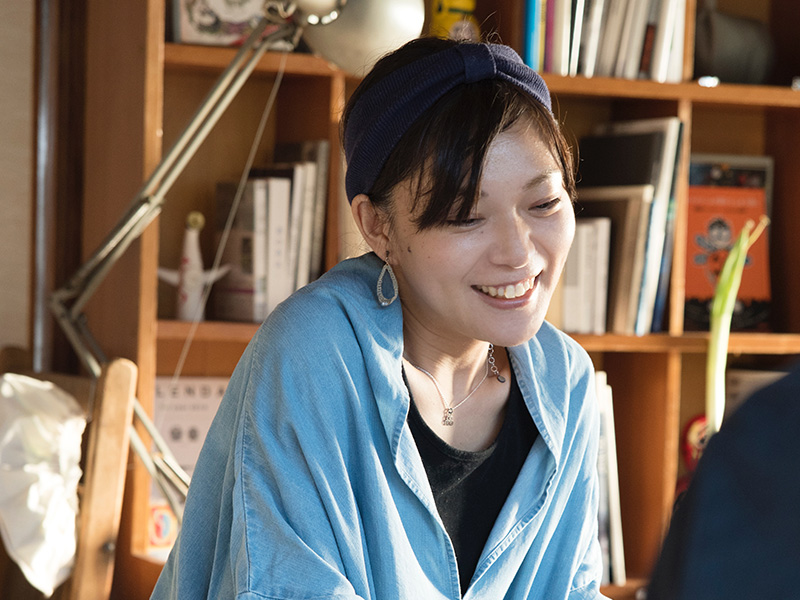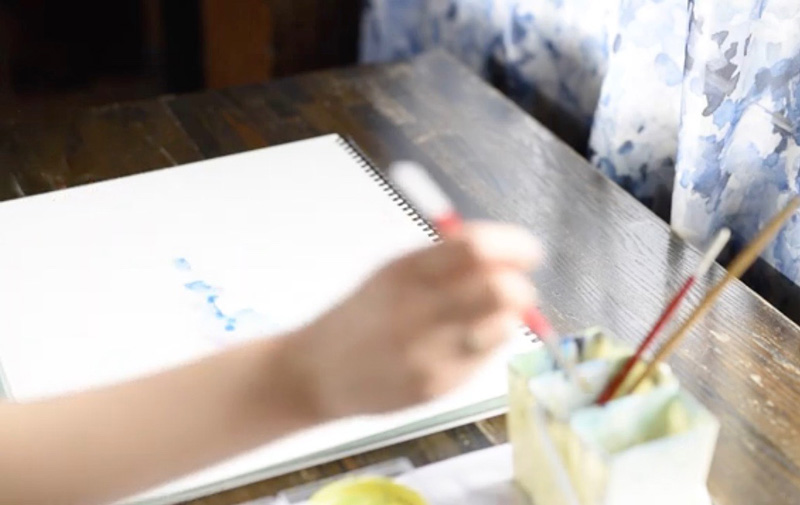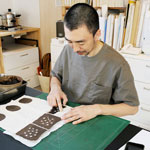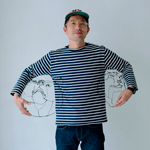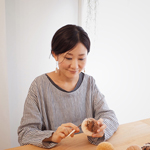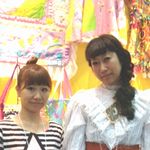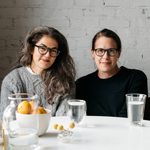TOPICS
The watercolor artist Ayano Ichiyanagi, who creates paintings with nature-inspired motifs, produces textiles and fashion accessories from her paintings. In June 2019, her textile label “yui” was released from Kokka. Here is a special interview with Ichiyanagi who has been creating beautiful nature themed artworks.
Since I was very young, I have liked drawing and dreamed of my future to “make a living in painting”. But when I was in high school, I couldn’t picture myself feeding myself by painting. That’s why I decided to go on to a local graphic design school to take a step closer to my childhood dream.
Having skills of both painting and design consequently contributed to expand my career opportunities. As a watercolor artist, I held several painting exhibitions in a year after graduation from design school. And then, I have expanded my activities to workshops, live painting events, collaborations with manufacturers or other artists, and dyeing.
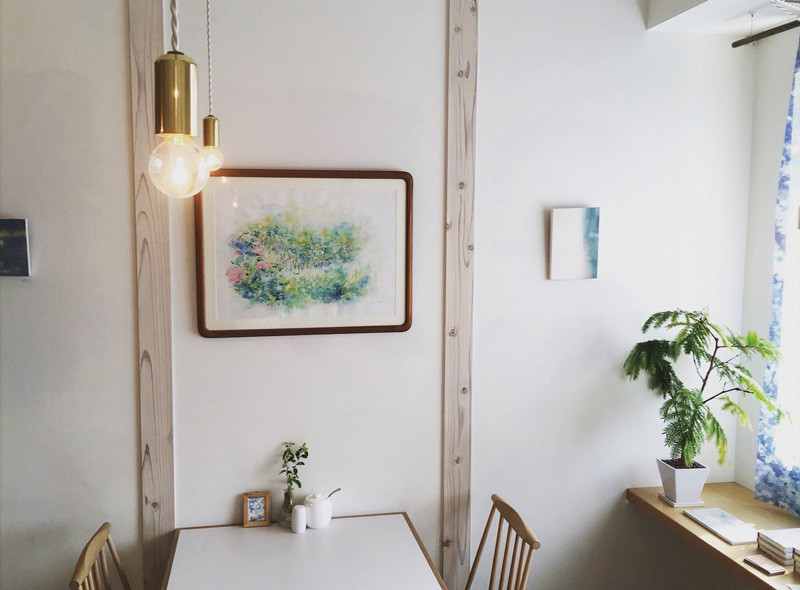
▲A painting in space at Ichiyanagi’s solo exhibition “Arukoto” at Te To Te Gallery Café in Amagasaki, Hyogo / November 2017
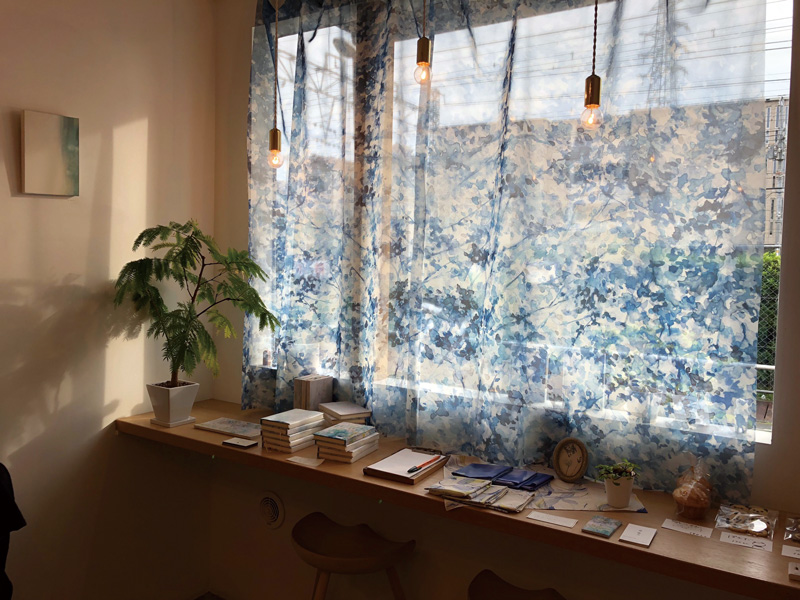
▲Her textile art also presented at Te To Te Gallery Café in Amagasaki, Hyogo
I started my career as a watercolor painter with two-dimensional arts. While holding a series of exhibitions to present my works, I received many comments from visitors like “I wish this painting would be my stole” or “I want a dress with the pattern illustrated in this picture.”
It was good timing for me because I was about to relocate to Kyoto. I decided to learn textile dyeing there. Soon after moving to Kyoto, I was accepted as a trainee for the 1-year traditional craftmanship training program, of which each trainee was eventually required to make and present an artwork at the end of the course. I learned dyeing technique under the guidance of artisans for a year. With such a great opportunity, I started to expand my work to textile and accessory designs on the concept of “art to wear”, while continuing to do watercolor paintings.

▲Ichiyanagi’s works displayed in the hall of Kyoto Art Center for the group exhibition “Waza Zemi 2010”, of which all trainees presented their accomplishments after the 1-year training program / May 2011
My artworks are inspired by every moment that I find beauty in daily life. I like finding inspiration in everyday life, not in a special occasion. Most motifs used in my works derive from the nature, which I am fond of. I like music, too, which feeds my imagination.

▲Ichiyanagi’s solo exhibition “Hibi o matou 2017 – parasol & headdress” at yamne crafts & antique shop in Kyoto, April 2017, where she had a pre-order sale of parasol and headdress; Since then, she has held an exhibition with pre-order sale of parasol once a year.
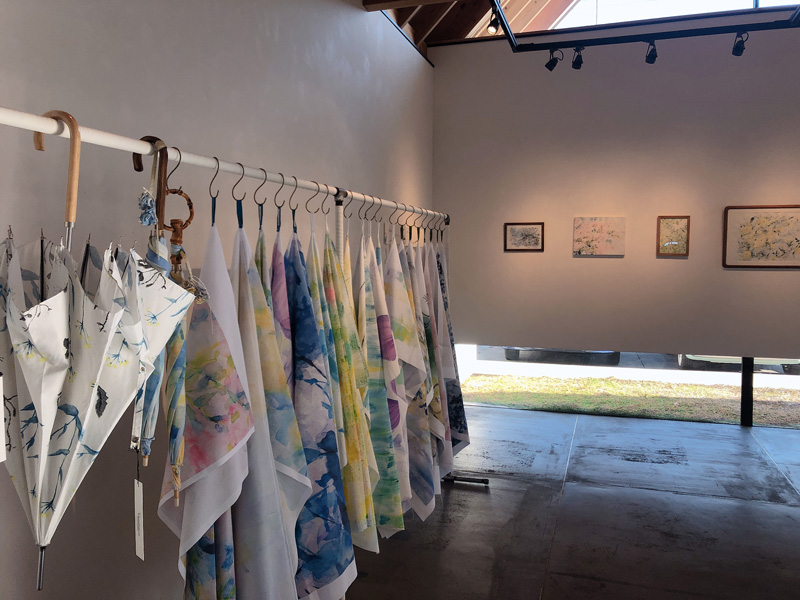
▲Another exhibition “Hibi o matou 2019” with pre-order sale of parasol and umbrella at Ema Gallery in Fujieda, Shizuoka / April 2019
I wake up at 7:00am. After breakfast and housekeeping, I start to work around 9:00am. After finishing work at 5:00ish, I do grocery shopping and then have dinner. I usually spend the night freely but occasionally need to go back to work. I always try to go to sleep around midnight.
It is on a case-by-case basis. I often go through my emails and draw a sketch in the morning. I spend the rest of the day for painting, design, or creation. Creation is actually not my daily work but should be done according to project or venue of presentation.
I take time to develop an idea in my mind. I can say that almost half of my creation work is done in my head. While I use my brain to develop my idea anytime and anywhere, I try to keep my practical skill by sketching every day. I do paint in the daytime because I prefer working with natural light as well as I want to ensure adequate sleep in the night. I have a workspace in the house.
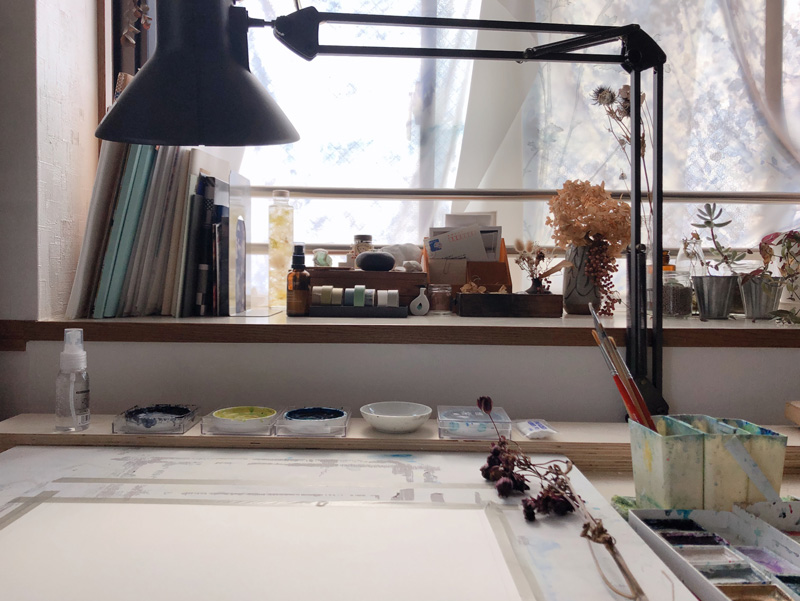
▲Ichiyanagi’s workspace with the sun streaming down.
Each fabric in this series reflects the moment that I find beauty in my hometown. I get inspirations from my daily life for not only “yui” series but also all my works.
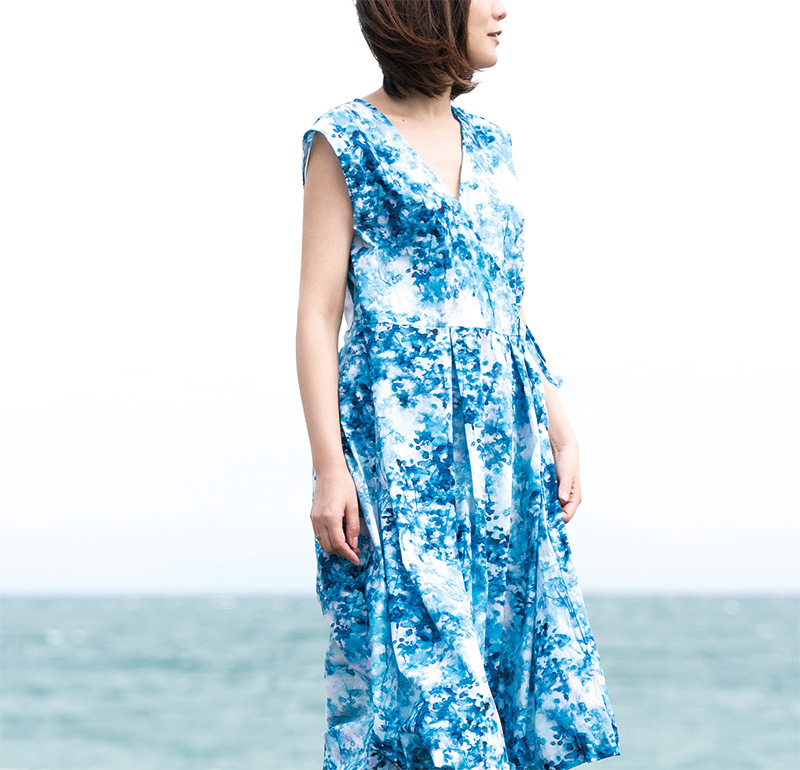
▲yui depicts the sunlight shining through the leaves of trees in the gentle wind. You could even hear rustling of leaves and song of birds. (inkjet-printed 60lawn cotton100%)

▲yui portrays particles of light on water, which somehow recalls you a tender memory.(inkjet-printed 60lawn cotton100%)
I enjoyed production process although its time was limited. It even surprised me how I could make a lot of watercolor paintings in a short period of time. Drawing polka dots was not easy for me at all. Polka dot is a basic pattern, but I had never used it as a motif for my works before. Therefore, I struggled to represent my artistic style through the simple-shaped pattern.
There were a few reasons. First, inkjet printer could mirror my coloration and touch. I was used to dealing with printing data through my experience with graphic design, as well. Plus, each fabric was differently designed with no color variations.
Regular textile printer allows designers to have more options for designs and colors. With regular printer, we can make colors overlapped or use unique colors like gold and silver. On the other hand, inkjet printer is more suitable to show subtle shades, gradation of colors, and touches. My paintings cannot be replicated by a regular textile printer. That’s why I am glad that the inkjet printer’s performance is improved, so that I can turn my painting into a fabric.
Succulent plants! I increased succulents in my room because they are cute and easy to care.
I am interested in home décor, too. I like thinking about the interior of my house as well as reading home décor books. I started remodeling my room little by little. It’s so fun! A mobile is what I want now. I am also attracted by serving dishes. The food presentation is difficult, but a dish can make food look differently. I want to collect nice dishes one by one. I currently look for a square plate.
I want to design drapes, wallpaper, fabrics for furniture, or anything like that for living spaces where we “reside” “inhabit” and “spend time”. And I love kids and hope to make products for children, too. I actually designed educational toys while I worked at a company for 6 years after graduation from design school. I also wish to design bookbinding or CD jackets.
I hope my “yui” textile will bring a joy to many people. That would be my pleasure if they use my textile as they like.

